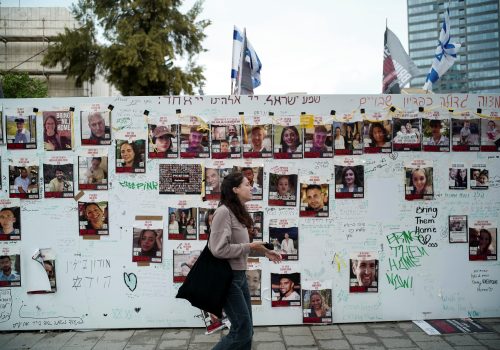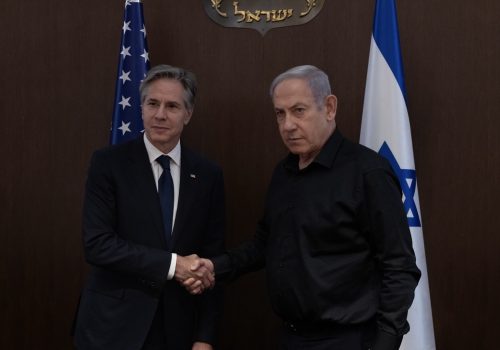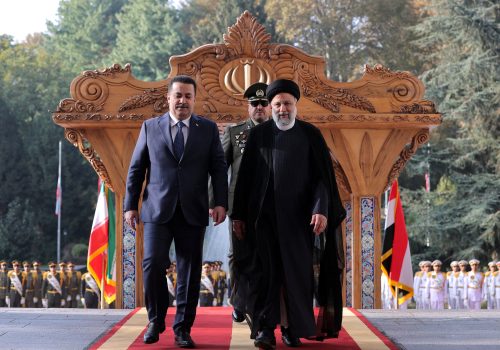What to expect in the next phase of Israel’s war against Hamas
On Friday, the pause in fighting between Israel and Hamas, which has allowed for the exchange of more than seventy Israeli hostages for Palestinian prisoners, came to an end, and the war has resumed. It was always bound to resume because, in response to Hamas’s heinous terrorist attack on October 7, Israel has pledged to prevent such an attack from happening again. To do that, Israel must destroy Hamas’s governing and military capacity.
What does the rest of the war look like? In part, it will build on the prior phase in northern Gaza. But it will also present new challenges and different missions for Israeli forces.
From October 7 to now
In the first few weeks following the terrorist attack, Israel successfully completed kinetic shaping operations in northern Gaza that were designed to soften the battlefield and reduce risk to Israeli ground forces. It did so by destroying as much of Hamas’s military capabilities and infrastructure from the air as possible.
The Israeli defense forces also directed Palestinian civilians to clear the battlefield and relocate south of Wadi Gaza for their safety. However, many civilians failed to heed that direction and remain on the battlefield, complicating military operations and leading to civilian casualties.
Israeli forces then set up and launched a ground incursion into Gaza from the north and have established a southern line of advance to the south of Gaza City and north of Wadi Gaza, effectively cutting the Gaza Strip into two parts—north and south. The Israeli Defense Forces (IDF) then moved south into Gaza City from two avenues of approach: from the northeast and northwest of the city and from the south along the Mediterranean Sea.
With the border fence to the east and troops to the north, west, and south, the IDF has cordoned off Gaza City and its surrounding metropolitan area. IDF troops have begun conducting search operations to destroy Hamas military capabilities and fighters inside Gaza City, moving in from the west. However, a large portion of Gaza City, and northern Gaza as a whole, has yet to be searched due to the implementation of a temporary pause in fighting, brokered by Qatar, that was negotiated to return Israeli hostages from Hamas’s custody in exchange for Palestinian prisoners.
What’s next
It is possible that the pause in fighting could be renewed to exchange additional Israeli hostages for Palestinian prisoners, but that would only be temporary. The remainder of the ground operation in Gaza is likely to take several months, though the actual timeframe will be determined in part by how much resistance Hamas puts up. Neither Hamas nor the Hamas-run Gaza Health Ministry has provided statistics on the number of Hamas members who have been killed, so the group’s strength is unclear.
Some in the international community are clamoring for a permanent ceasefire in exchange for the release of the remaining hostages or for other conditions. That is unlikely and unrealistic given what Israel faces politically and militarily. A ceasefire would prevent Israel from achieving its stated objective of demilitarizing Hamas and preventing another attack, as Hamas still has sufficient capacity to conduct another attack if left to its own devices.
As the commander-in-chief of Israel’s armed forces, Prime Minister Benjamin Netanyahu must ensure that a terrorist attack of this nature can never happen again. The brutal and savage nature of the October 7 attack, and the involvement of such a large number of Hamas terrorists, is evidence of an ideological problem that must be addressed through demilitarization and continuous degradation and destruction of Hamas’s military capabilities. Ideology cannot be killed with with bombs and bullets, but the organization can be demilitarized—of both men and materiel. This is similar to the approach taken in the campaign to counter the Islamic State of Iraq and al-Sham (ISIS) in Syria and Iraq.
Following the end of the temporary pause, Israel has restarted combat operations to complete the search-and-destroy mission in northern Gaza required to demilitarize Hamas in that area. To date, Hamas has not put up significant resistance, but it is possible that the group has used the temporary pause to prepare defensive positions throughout Gaza to fight against Israeli forces.
Israel has also not yet entered the tunnel system that exists under Gaza in a meaningful way, though this may be on purpose. There are hundreds of kilometers of tunnels and perhaps as many as a hundred tunnel complexes. Such a dangerous mission is going to take time. However, the return of more hostages would allow Israel to conduct operations to destroy the tunnel system without fear of killing as many Israeli civilians and foreign citizens held by Hamas.
Once northern Gaza has been cleared, Israel will move to initiate the southern ground campaign. Its objectives will be the same as those in northern Gaza: to demilitarize Hamas. Israeli ground forces will conduct search-and-destroy missions targeting Hamas military capabilities in southern Gaza, including the city of Khan Yunis, until the last building and tunnel has been searched. However, this campaign will be different and more difficult because of the large number of civilians who will be present on the battlefield.
Given Israel’s evacuation orders from the north, the population in southern Gaza has swelled to nearly double its pre-war numbers, some two million people, in an area where infrastructure was already stressed. This could limit Israel’s ability to use air power and may complicate ground operations. Both of these factors also increase the risk to Israeli forces that will operate in the area.
Israel has also proposed “humanitarian zones” in southern Gaza for civilians to relocate temporarily, but it will be difficult to move the large number of civilians quickly.
Once the southern campaign is complete, Israel, or an alternate security force comprised of troops from other countries, will have to provide security in Gaza to enable reconstruction and state-building activities. What will this look like? It is too soon to tell, and Israel runs the risk of having to conduct a counterinsurgency operation following the war. This will likely be the longest phase of the operation and one that is fraught with the most political risk.
Alex Plitsas is a nonresident senior fellow with the Middle East Programs’ N7 Initiative, a partnership between the Atlantic Council and Jeffrey M. Talpins Foundation working to strengthen and deepen Arab-Israeli normalization. He is also currently a principal and industry director for aerospace and defense and high-tech electronics at Providence Consulting Group. He previously served as chief of sensitive activities for special operations and combating terrorism in the US Office of the Secretary of Defense
Further reading
Mon, Nov 27, 2023
Why Israel has no imminent plans to wind down its war on Hamas
MENASource By Shalom Lipner
Motivation in Israel, where the trauma of October 7 is still palpable, remains high to persist until the eradication of Hamas and its capability to inflict harm on Israeli targets.
Tue, Nov 21, 2023
The post-October 7 US strategy in the Middle East is coming into focus
New Atlanticist By Daniel E. Mouton
While the conflict has increased the urgency for the United States to engage in the region, it is just one of several developments that require renewed US leadership.
Fri, Nov 17, 2023
The Gaza war is a reminder that the US needs to reevaluate its Iran policy
IranSource By
Despite the Biden administration's efforts to prevent a further escalation and the expansion of the Israel-Hamas war in the region, Iran-backed militia groups continue to challenge US forces.
Image: Israeli soldiers hold an Israeli flag, as they ride in a Merkava tank, near Israel's border after leaving Gaza, during the temporary truce between the Palestinian Islamist group Hamas and Israel, in Israel, November 24, 2023. REUTERS/Amir Cohen


